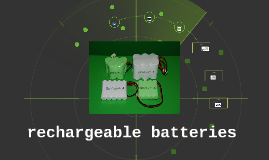battery
Transcript: photo credit Nasa / Goddard Space Flight Center / Reto Stöckli http://www.allaboutbatteries.com/history-of-batteries.html history of the battery Among the relics found in the tomb was a clay jar or vase, sealed with pitch at its top opening. An iron rod protruded from the center, surrounded by a cylindrical tube made of wrapped copper sheet. The height of the jar was about 15 cm, and the copper tube was about 4 cm diameter by 12 cm in length 1800 -- Alessandro Volta publishes details of a battery That battery was made by piling up layers of silver, paper or cloth soaked in salt, and zinc. Many triple layers were assembled into a tall pile, without paper or cloth between zinc and silver, until the desired voltage was reached. Even today the French word for battery is ‘pile' (English pronunciation "peel".) Volta also developed the concept of the electrochemical series, which ranks the potential produced when various metals are in contact with an electrolyte. How handy for us that he was well known for his publications and received recognition for this through the naming of the standard unit of electric potential as the volt. 1898 to 1908 -- the Edison Battery Thomas Edison, the most prolific of all American inventors, developed an alkaline cell with iron as the anode material (-) and nickelic oxide as the cathode material (+). The electrolyte used was potassium hydroxide, the same as in modern nickel-cadmium and alkaline batteries. The cells were well suited to industrial and railroad use. They survived being overcharged or remaining uncharged for long periods of time. Their voltage (1 to 1.35 volts) was an indication of their state of charge. He was remarkably close to discovering the principle of the battery, but missed it. He thought the reaction was due to a property of the tissues. He used two dissimilar metals in contact with a moist substance to touch dissected frog legs. The resulting current made the muscles in the frog legs twitch. Camille Faure's acid battery used a grid of cast lead packed with lead oxide paste, instead of lead sheets. This improved its ability to supply current. It formed the basis of the modern lead acid battery used in autos, particularly when new separator materials were developed to hold the positive plates in place, and prevent particles falling from these plates from shorting out the positive and negative plates from the conductive sediment. 1859 -- Lead Acid -- the Planté Battery Raymond Gaston Planté made a cell by rolling up two strips of lead sheet separated by pieces of flannel, and the whole assembly was immersed in dilute sulphuric acid. By alternately charging and discharging this cell, its ability to supply current was increased. An improved separator was obviously needed to resist the sulphuric acid

















